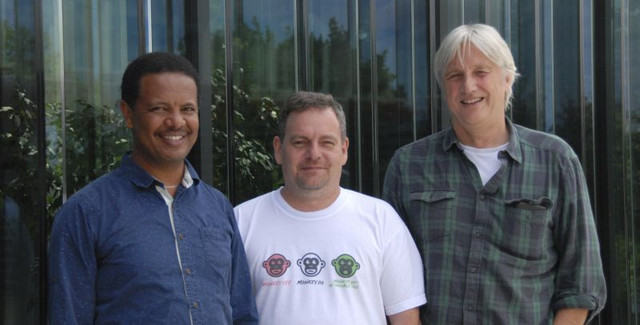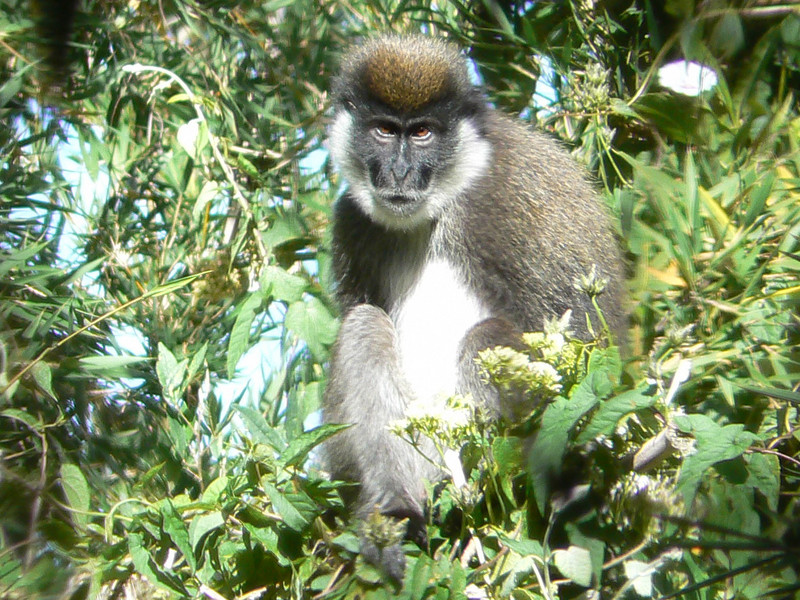New Humboldt fellow starts two years’ research scholarship at the DPZ
Our new colleague Anagaw Atickem from Ethiopia starts his research project at the German Primate Center (DPZ) in Göttingen. Atickem received a Georg Forster Research Fellowship of the Alexander von Humboldt Foundation and will work at the DPZ for the next two years. During this time, he will study the molecular phylogeny of African green monkeys. The results of this research will enhance the understanding of the evolution of these primates and are expected to support the development of the local primate conservation management in Ethiopia. During his scholarship he will collaborate with Dietmar Zinner and Christian Roos from the German Primate Center, who are both experts on primate phylogeny and with the University of Addis Abada in Ethiopia. This cooperation is one example for the transfer of scientific knowledge and methods towards developing countries from the DPZ.
Anagaw Atickem’s research focuses on the phylogenetic analysis of three green monkey species (Vervet, Grivet and Bale monkey) of which the Bale monkey is endemic to Ethiopia. Due to high deforestation rates the natural habitat of the Bale monkey gets increasingly destroyed and fragmented, allowing Vervet and Grivet monkeys, which are adapted to open woodland habitats, to enter the range of Bale monkeys. In this case, either Bale monkeys get expelled from the habitat or gene flow between these different species (hybridization) occurs, i.e. individuals of different species mate and reproduce with each other. Eventually, this might lead to the extinction of the endemic species. New genetic methods, like the next-generation sequencing, will allow Anagaw Atickem to determine the degree of gene flow among the different species which can be correlated to human induced habitat conversation. “This knowledge is essential in order to develop effective conservation measures”, says Dietmar Zinner of the German Primate Center.
Anagaw Atickem (41) was born in Bahir Dar in the North of Ethiopia and studied biology at the University of Addis Abada. He finished his PhD ecological genetics at the University of Oslo, Norway, in 2013. The Georg Forster Research Fellowship especially awards professionals who carry out research designed to promote the transfer of scientific knowledge and methods towards developing countries. This meets one of the interests of the DPZ. The DPZ maintains field stations in Peru, Senegal, Madagascar and Thailand and supports primate research also in other countries of primate origin. Research here includes studies on behaviour, ecology, evolution and conservation of primates. Essential to all these projects is, however, the involvement and education of local students and scientists.
“Next-generation sequencing is a very useful tool in science; I expect I will learn a lot about this methodology and can transfer it back home”, says Anagaw Atickem. Dietmar Zinner from the Cognitive Ethology Laboratory and Christian Roos from the Primate Genetics Laboratory of the DPZ are looking forward to this collaboration. “Dr. Atickem is a highly qualified colleague who did interesting research on the mammal diversity of Ethiopia. His project will nicely complement our own research on African primates and his fellowship will further strengthen the scientific ties between the DPZ and research institutions in Africa”, says Dietmar Zinner. Atickem is also pleased about the scholarship: “I know the DPZ since I started my research on primates. It is the best place to develop my knowledge and my career”, he says. From October to November Atickem will collect samples of the three green monkey species in Ethiopia for genetic analyses.


